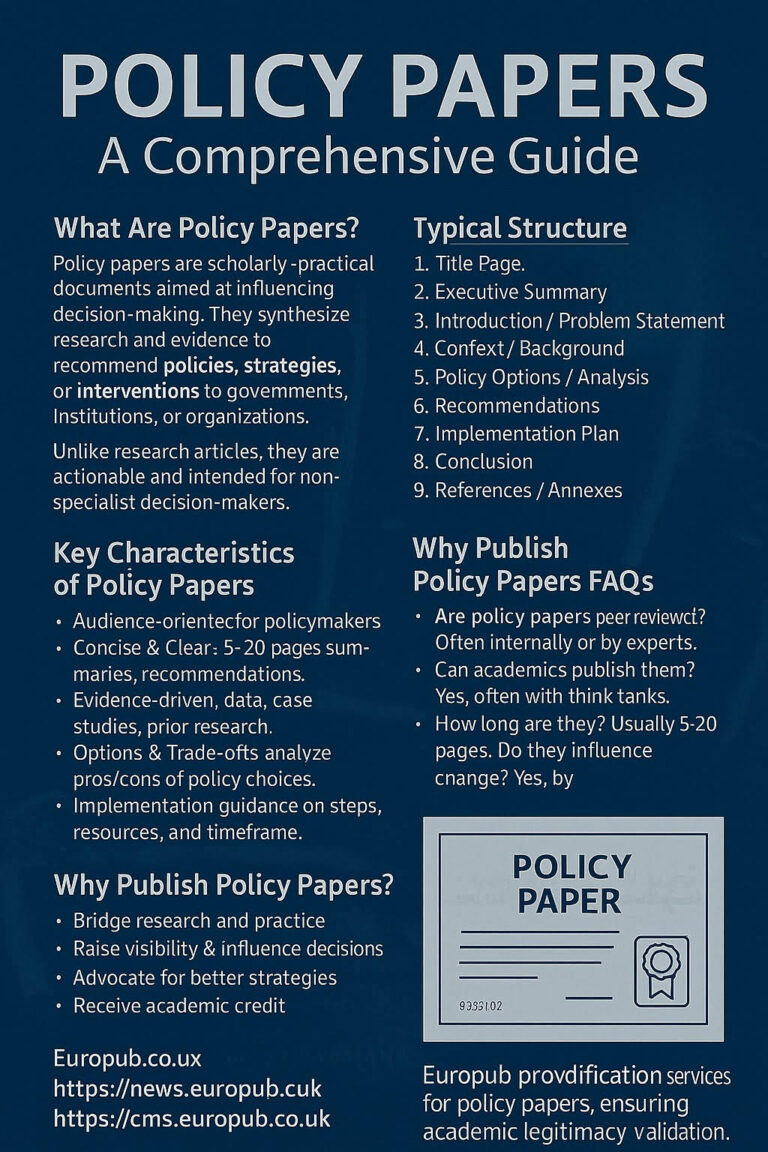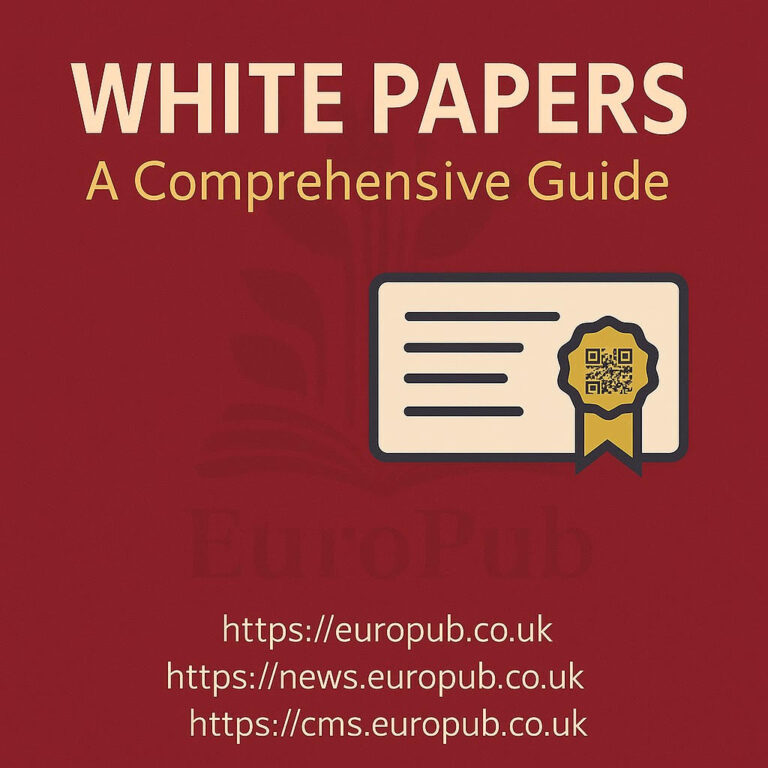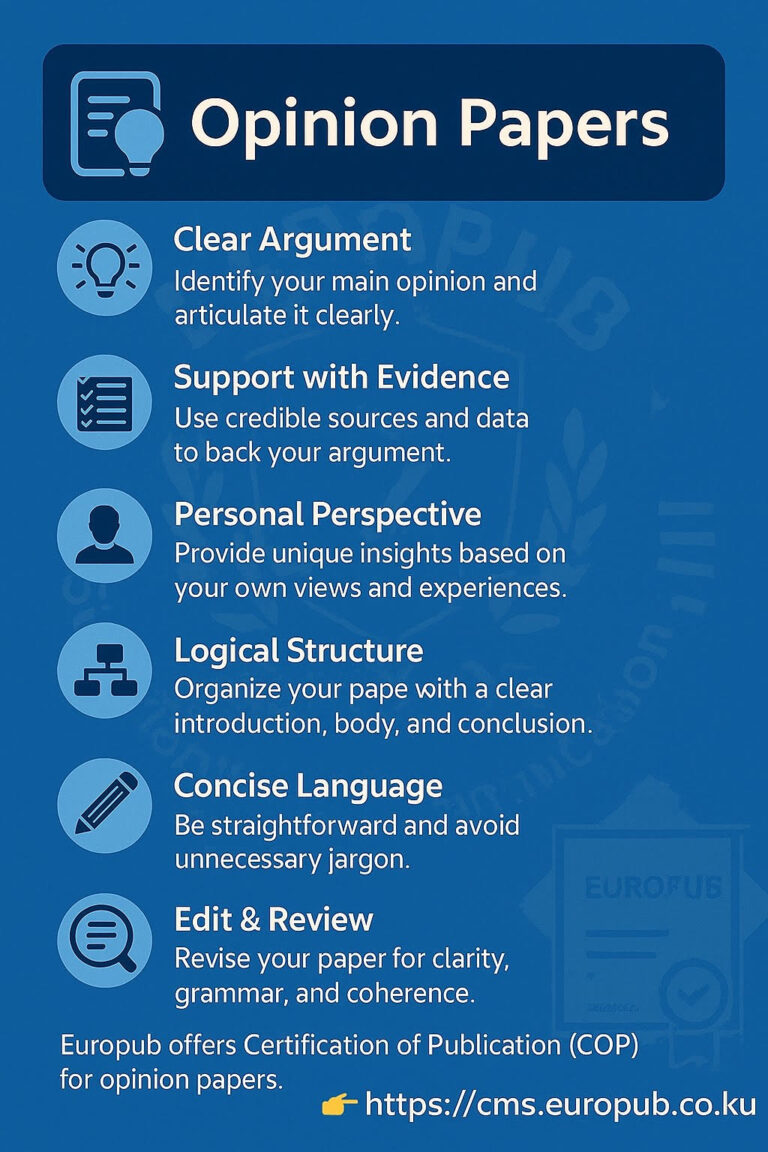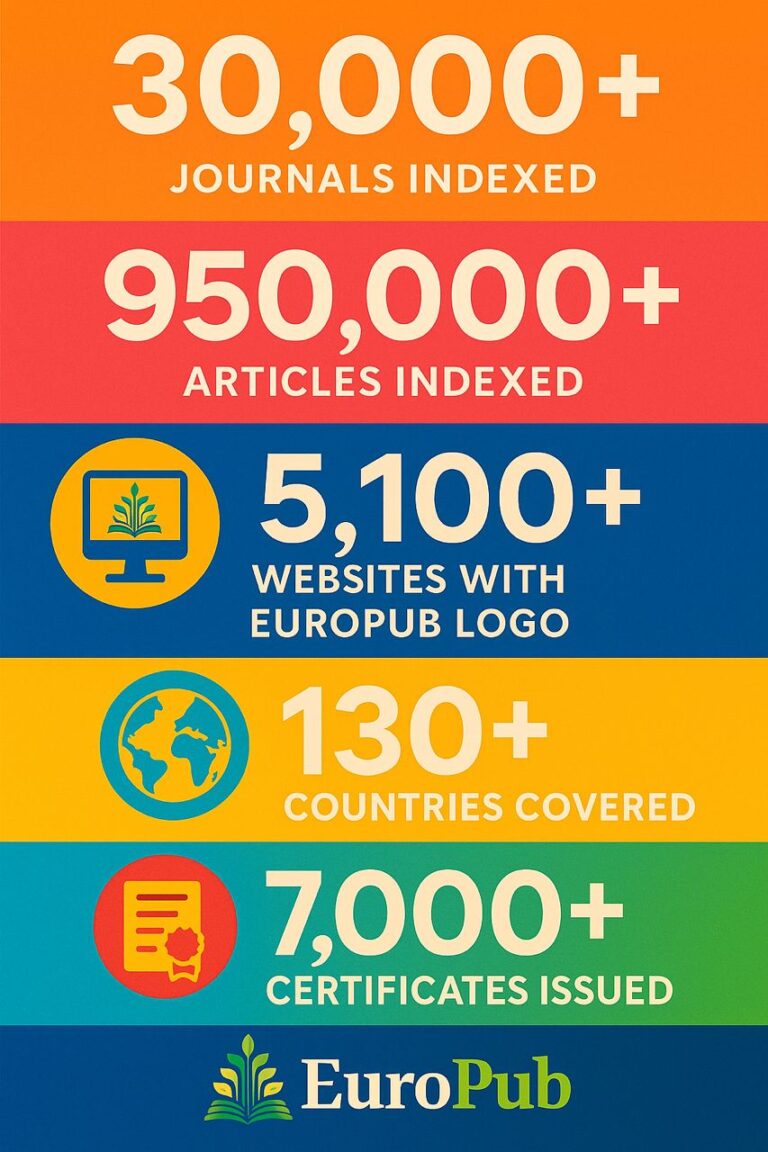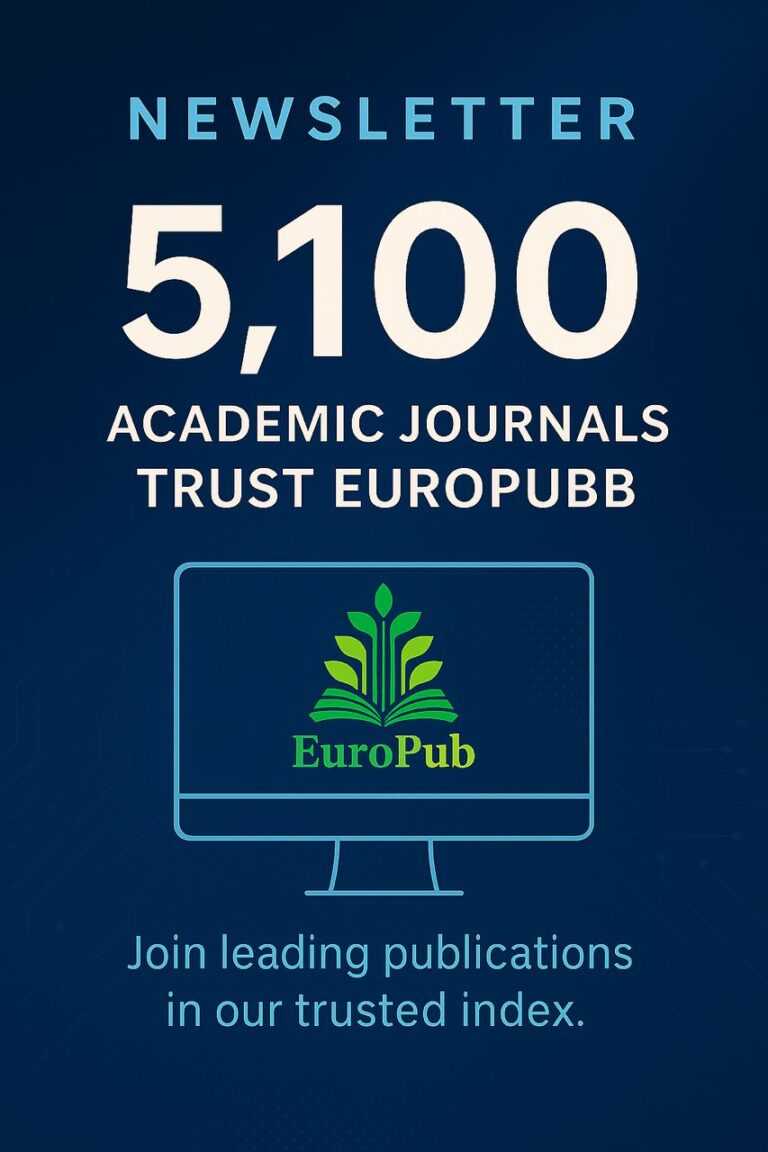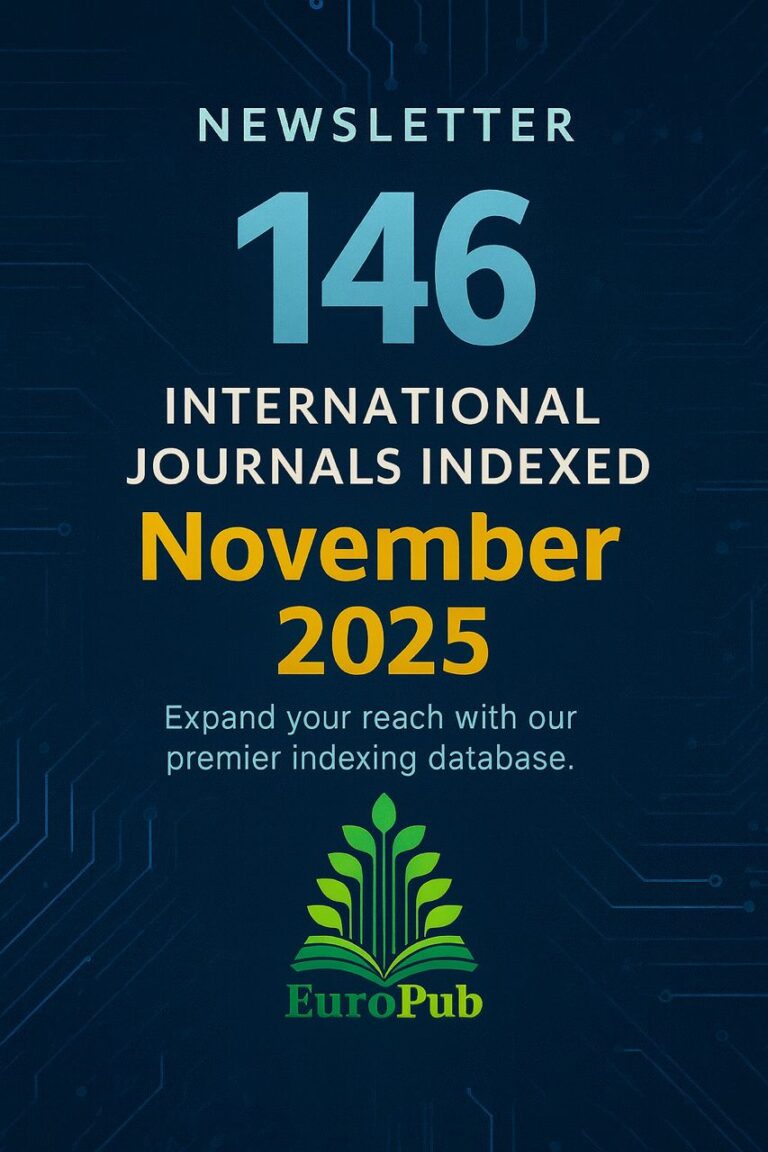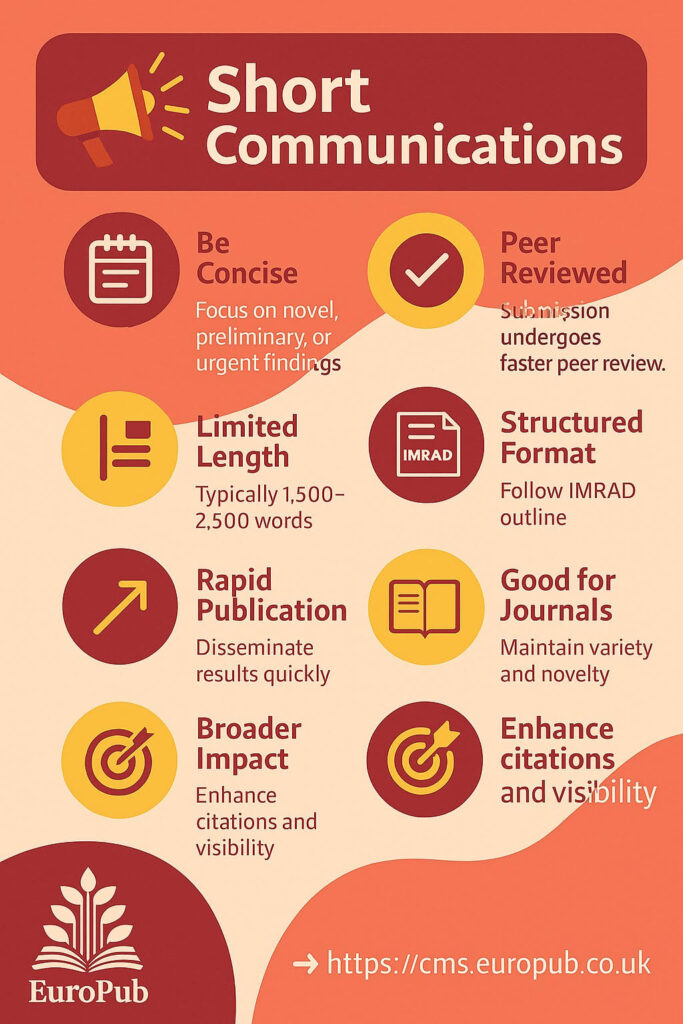
Short communications (also called “brief reports” or “letters”) are concise scientific papers that present novel, preliminary, or urgent findings without the length or depth of a full research article. They are highly valued in fast-moving research areas, where rapid dissemination of results can influence the direction of further studies.
 Key Features of Short Communications
Key Features of Short Communications
- Conciseness
- Typically 1,500–2,500 words in length.
- Limited figures, tables, and references.
- Focus
- Reports a single, well-defined result or small dataset.
- No need for an extensive literature review or methodology.
- Structure
- Abstract → Introduction → Methods (brief) → Results → Discussion → References.
- Review Process
- Peer-reviewed, but often faster than full articles.
- Priority is given to novelty and relevance.
- Publication Purpose
- Share findings quickly.
- Highlight urgent discoveries, clinical insights, or emerging trends.
 Benefits of Short Communications
Benefits of Short Communications
- Faster publication → Rapid visibility of research.
- Good for early-career researchers to build publication records.
- Increases citation potential if the findings are impactful.
- Journals often use short communications to maintain novelty and variety.
 FAQs about Short Communications
FAQs about Short Communications
Q1: How are short communications different from full-length articles?
 They are shorter, less detailed, and often focused on one key finding rather than a complete study.
They are shorter, less detailed, and often focused on one key finding rather than a complete study.
Q2: Do short communications count as peer-reviewed articles?
 Yes, they undergo peer review and are considered valid scholarly publications.
Yes, they undergo peer review and are considered valid scholarly publications.
Q3: Can a short communication later be expanded into a full paper?
 Yes, many researchers develop preliminary short reports into full-length articles with more data and analysis.
Yes, many researchers develop preliminary short reports into full-length articles with more data and analysis.
Q4: What journals accept short communications?
 Almost all academic journals across disciplines (e.g., Elsevier, Springer, Wiley) have dedicated sections for short communications or brief reports.
Almost all academic journals across disciplines (e.g., Elsevier, Springer, Wiley) have dedicated sections for short communications or brief reports.
Q5: Are short communications indexed in databases like Scopus or Web of Science?
 Yes, as long as the hosting journal is indexed, short communications are also indexed and contribute to citations, h-index, and impact factor.
Yes, as long as the hosting journal is indexed, short communications are also indexed and contribute to citations, h-index, and impact factor.
 Useful Links
Useful Links
- Elsevier Author Guide – Short Communications
- Springer Journals – Types of Articles
- Wiley – Writing Short Communications
 Europub Certification Note
Europub Certification Note
Europub provides certificates of publication and authorship recognition for short communications, ensuring credibility for both journals and researchers.
 Apply for certification at: https://cms.europub.co.uk
Apply for certification at: https://cms.europub.co.uk
